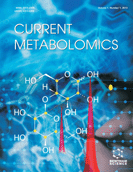Abstract
Background: Controlling aquatic pollution with natural resources is a worldwide hot topic of research, according to its positive environmental impact.
Methods: Chitosan is cross linked with sodium Tripolyphosphate (TPP) to form microsphere. Then microsphere could be effectively utilized to remove Pb ion from water with a removal rate of 59.2% in 90 minutes. The microsphere is further enhanced as dried water hyacinth is mixed with chitosan to produce modified water hyacinth/chitosan microsphere up to 50% water hyacinth. The crosslinking process for chitosan as well as chitosan/water hyacinth is indicated with the help of Fourier Transform Infrared Spectroscopy (FTIR). The interaction between chitosan and water hyacinth is simulated with ab initio using HF/STO-3G model.
Results: The produced water hyacinth/chitosan microsphere shows removal of Pb ions up to 90.6% in 180 minutes. The produced microsphere is cost effective.
Conclusion: Applying two stages of removal one can obtain good results of removal up to 90.6%. In this manner the cost effective water hyacinth cross linked chitosan is produced effectively with good removal percentage. Finally, the structure of water hyacinth is simulated with molecular modeling at HF/STO-3G.
Keywords: Chitosan, FTIR, Microspheres, Water hyacinth and HF/STO-3G, molecular modeling, sodium Tripolyphosphate.
 42
42 1
1


















